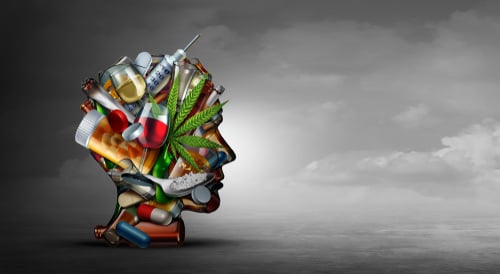Recognizing Drug Paraphernalia
The federal government explains that the term drug paraphernalia refers to any equipment and/ or accessory that is used for making, concealing, and/ or consuming illicit drugs. The types of drug paraphernalia present will vary as different accouterments are used with different substances. The United States Drug Enforcement Administration (DEA) enforce the Controlled Substance Act, which states that it is illegal, on the federal level, to sell drug paraphernalia, to mail or “any other facility of interstate commerce to transport drug paraphernalia” and/ or to export or import drug paraphernalia. There are many types of illegal substances available in America, and while there may be some overlap, each substance utilizes specific kinds of paraphernalia.
Marijuana Paraphernalia
Marijuana is a substance that is derived from the hemp plant and typically comes in the form of a mixture of the plant’s dried leaves, stems, flowers and seeds. Examples of the types of drug paraphernalia that is commonly found in connection to marijuana use include:
- Bongs: water pipes used to filter marijuana through water and then used to smoke
- Pipes: used to smoke marijuana
- Roach clips: holding onto a joint or blunt that has become too short to hold with one’s fingers
- E-cigarettes: marijuana cartridges are available to be vaped out of an electronic cigarette
- Lighters: used to light pipes, and marijuana cigarettes
- Cigars: commonly hollowed out to be fill with marijuana and smoked; known as blunts
- Rolling papers: used to roll marijuana and create a joint to be smoked
With the exception of e-cigarettes, marijuana has a relatively potent smell. When posed with the question: What does marijuana smell like? The answer is typically a woody, earthy, herbal, skunk-like scent.
Cocaine Paraphernalia
Cocaine is an addictive and potent stimulant drug that can be ingested via the nasal cavity (snorting), inhaled (smoking), or intravenously (injected). Paraphernalia that is most commonly associated with cocaine use includes:
- Razor blades: used to crush and cut up cocaine into lines to snort
- Playing cards: used as a smooth surface to create lines of powdered cocaine
- Mirrors: used as a smooth surface to create lines of powdered cocaine
- Short, plastic straws: used to snort cocaine
- Rolled up paper: used to snort cocaine
- Small spoons: used to bring drugs up to nose to snort cocaine
- Pipes: used to smoke cocaine
When posed with the question: What does cocaine smell like? The answer is typically a sweet, floral, chemical-like, metallic scent.
Heroin Paraphernalia
Heroin is a highly addictive opioid drug. It can be ingested in several different ways including smoking, snorting, and/ or intravenously (injecting). The type of drug paraphernalia will differ based on the method of ingestion. Some examples of heroin paraphernalia include:
- Tin foil
- Pipes
- Needles
- Small spoon or bottle caps
- Cotton balls
- Rubber hose or shoelace
- Lighter
- Straw
- Rolling papers
When posed with the question: What does heroin smell like? The answer is typically a faint vinegar scent.
MDMA/ Molly/ Ecstasy Paraphernalia
MDMA, also known as Molly or ecstasy, is a synthetic drug similar to both hallucinogens and stimulants. It is typically swallowed or snorted. Some commonly found paraphernalia items in association with MDMA use include the following examples:
- Bags of candy to conceal pills
- Glow sticks
- Surgical masks
- Pacifiers and/ or lollipops to help prevent jaw clenching and/ or teeth grinding
It is important to note that it is not uncommon for some everyday objects to be used as drug paraphernalia. Examples of these items could include: eye drops, mouthwash, mints, breath sprays, sunglasses, perfume and/ or cologne, and gum. Further, some people may get creative and repurpose items to conceal their drugs. Certain items such as pill bottles, gum wrappers, felt-tip markers, lipstick dispensers, and/ or cigarette packages can serve as adequate containers for substances (depending on the type of drug) that would provide a location for illicit substances to be hidden in plain sight.
For Information and Support
Substance abuse and addiction can be incredibly dangerous, and can result in severe short and long-term consequences. If you or someone you know is suffering from substance abuse or addiction, please get help as soon as possible. The earlier you seek support, the sooner you and your loved ones can return to leading happy, healthy and fulfilling lives. There is no reason to go through this alone, and we are here to help. Please feel free to reach out to us for further information or with any questions regarding substance abuse or addiction. We are available anytime via telephone at: 213-389-9964, or you can always email us at: info@friendlyhousela.org.



